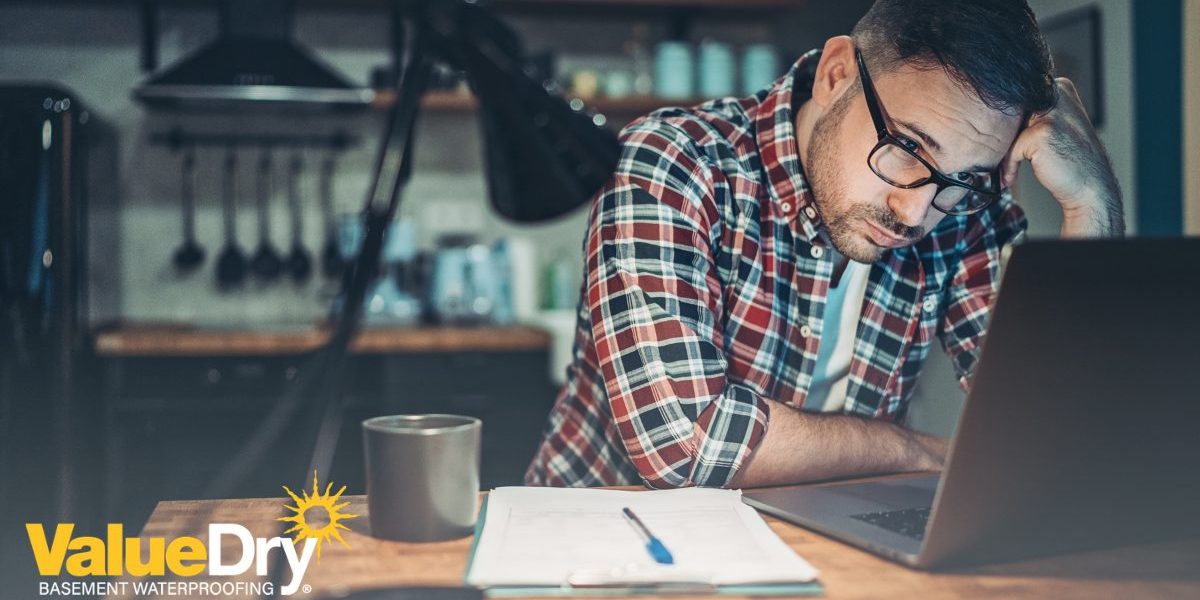Which is better interior or exterior waterproofing?
- April 29, 2021
- No Comments
When dealing with a damp or flooded basement, it’s important to explore your options. Investing in professional basement waterproofing can provide a long-lasting solution to water intrusion issues. But which is the better choice, interior or exterior basement waterproofing?
Interior vs. exterior waterproofing depends on the specific needs of your property. Exterior waterproofing involves excavating soil around your home and applying a strong sealant to repair leaks. Interior waterproofing systems are often more effective in preventing basement moisture.
Your choice should be based on the unique issues you’re facing and your budget.
Interior vs exterior waterproofing
When facing basement water issues, homeowners have two effective waterproofing methods to choose from, interior and exterior.
Exterior waterproofing systems are well-suited for newly built homes but can be expensive and disruptive for existing ones. Interior waterproofing is more budget-friendly, easier to install, carries a stronger warranty, and is less likely to get clogged or damaged by freeze-thaw cycles.
Considering factors like your home’s age, budget, time constraints, landscape, and climate is essential when deciding between the two. Consulting with a professional basement waterproofing company can help determine the most suitable solution for your needs.
Value Dry Waterproofing specializes in interior basement waterproofing. In our experience, most homes in the Mid-Atlantic region will experience a wet basement within 10 years of construction without a professionally installed interior water pressure relief system.
Exterior basement waterproofing
For new construction in the Mid-Atlantic region, it’s wise to include basement waterproofing in your budget. Exterior waterproofing can be easily incorporated during the construction stage. This process, often called “damp-proofing,” helps builders meet the two-year foundation wall seepage warranty typically provided on new homes.
An exterior system can be installed around an existing home, but it requires disrupting landscaping like patios, stoops, additions, sunrooms, and garages, amongst other finishings. Excavation of soil surrounding your home’s foundation is needed to install an exterior footer drain adjacent to your footings.
Ideally, the footer drain should drain somewhere on your property, which is not always possible after construction. During this process, a waterproof membrane or coating is applied to the wall to prevent seepage. Unfortunately, this method is often quite expensive.
An exterior French drain can also get clogged relatively easily, causing water to flow back into your basement, defeating the entire purpose. Machinery, plant life, and rodents can obstruct the flow of the exterior drainage, causing water to accumulate next to the home and infiltrate the foundation.
Interior basement waterproofing
We have found that interior basement waterproofing is the most budget-friendly and long-lasting solution for existing homes. Keep in mind that waterproofing technology has made significant advancements over time. Even if your older home has some system in place, the basement walls may not withstand the increasingly heavy rainfalls we experience.
With interior waterproofing, you still get a footer drain around the interior perimeter. This involves using jackhammers to remove a portion of the concrete floor adjacent to the exterior foundation walls. Once the drain system is in place, new concrete is poured to cover the drainage.
Since the French drain system is situated next to the footers, beneath the floor, and inside your home, away from natural hindrances, a clog is much less likely. Additionally, weep holes and convection ports may be drilled into the walls to prevent water from saturating the concrete.
This internal footer drain manages hydrostatic pressure pushing up beneath your slab during extreme prolonged precipitation. Footer drains installed on the home’s exterior cannot manage this under-the-slab hydrostatic water pressure.
The drainage system connects to one or more sump pumps, which pump water up and out of your basement before it causes damage. We recommend installing a battery backup sump pump to ensure maximum protection during primary pump failure or power outages.
Aspects to Consider
When choosing between exterior and interior basement waterproofing, several factors should be taken into account before making your decision:
- Age of your home
- Cost
- Timeframe
- Landscape and hardscape
- Climate and weather patterns
Expert Basement Waterproofing Contractors
Ultimately, selecting the best solution to keep your basement dry is up to you. However, working with a professional basement waterproofing company is crucial to assess your home’s specific requirements and determine the most appropriate solution for your situation.
At Value Dry Waterproofing, we specialize in basement waterproofing. With our interior waterproofing process, we offer a lifetime transferable warranty. Exterior methods typically include a 5-10 year warranty, however. Interior waterproofing methods come with a much preferable lifetime transferable warranty. Increasing your home’s value when you decide to sell.
Freeze-thaw cycles can wreak havoc on anything done to the exterior foundation. Contact Value Dry for your FREE basement inspection. We can let you know if your home has been affected by freeze-thaw cycles.
Our trusted inspectors will document their findings, and we will present you with customized solutions to your water intrusion problems. Over the last 20 years, we’ve assisted tens of thousands of homeowners like you. Schedule your inspection today to take the first step toward a dry basement.


